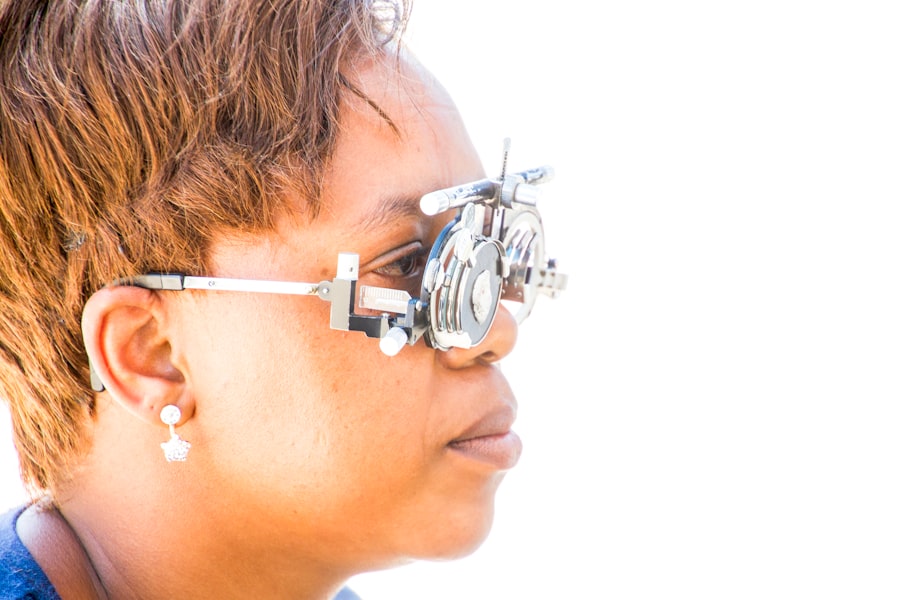Before undergoing laser hair removal treatment, it is essential to schedule a pre-treatment consultation with a qualified and experienced dermatologist or licensed technician. During this consultation, the practitioner will assess your skin type, hair color, and medical history to determine if you are a suitable candidate for the procedure. They will also discuss the potential risks and benefits of the treatment, as well as what to expect during and after the procedure. It is important to be honest and open about any medical conditions, medications, or previous treatments you have undergone to ensure the safety and effectiveness of the laser hair removal process.
Furthermore, the pre-treatment consultation is an opportunity to ask any questions or address any concerns you may have about the procedure. The practitioner will explain the technology used, the number of sessions required for optimal results, and the estimated cost of the treatment. Additionally, they will provide you with pre-treatment instructions, such as avoiding sun exposure and certain skincare products, to prepare your skin for the laser hair removal process. Overall, the pre-treatment consultation is a crucial step in the laser hair removal journey, as it allows you to make an informed decision and ensures that you are well-prepared for the procedure.
Key Takeaways
- Pre-Treatment Consultation:
- Consult with a qualified professional to discuss your skin type, medical history, and treatment expectations.
- Understand the potential risks and benefits of the laser treatment.
- Skin Preparation:
- Follow the recommended skincare routine provided by the professional to prepare your skin for the laser treatment.
- Protective Eyewear:
- Wear protective eyewear during the laser treatment to shield your eyes from the intense light.
- Application of Cooling Gel:
- Expect the application of a cooling gel to minimize discomfort and protect the skin during the laser treatment.
- Laser Treatment:
- Undergo the laser treatment as per the professional’s guidance, ensuring proper settings and technique are used for your specific needs.
- Post-Treatment Care:
- Follow the aftercare instructions provided by the professional to promote healing and minimize potential side effects.
- Follow-Up Appointments:
- Schedule and attend any necessary follow-up appointments to monitor your skin’s response to the laser treatment and address any concerns.
Skin Preparation
Skin preparation is a vital aspect of laser hair removal treatment, as it can significantly impact the effectiveness and safety of the procedure. Prior to the treatment, it is important to follow the pre-treatment instructions provided by the practitioner during the consultation. This may include avoiding sun exposure and tanning beds, as well as refraining from using certain skincare products, such as retinoids and exfoliants, which can make the skin more sensitive to the laser. Additionally, it is recommended to shave the treatment area a day or two before the procedure to ensure that the laser energy targets the hair follicles beneath the skin’s surface.
Moreover, maintaining good skin hygiene and moisturizing the treatment area can help prepare the skin for laser hair removal. Clean, moisturized skin allows for better laser penetration and reduces the risk of irritation or adverse reactions during the treatment. By following these skin preparation guidelines, you can optimize the results of the laser hair removal process and minimize any potential side effects. It is important to adhere to these pre-treatment instructions to ensure that your skin is in the best possible condition for a successful laser hair removal session.
Protective Eyewear
During the laser hair removal procedure, both the practitioner and the patient must wear protective eyewear to shield their eyes from the intense light and heat produced by the laser. The eyes are extremely sensitive to light and can be damaged if exposed to laser radiation without proper protection. Therefore, wearing specialized goggles or glasses that are designed to block out the specific wavelengths of light emitted by the laser is crucial for ensuring the safety of everyone involved in the treatment.
The protective eyewear should be provided by the clinic or practitioner performing the laser hair removal procedure and should be worn throughout the entire duration of the treatment. It is essential to keep the eyes closed or covered with protective eyewear whenever the laser is in use, even if it is just for a brief moment. By prioritizing eye safety and using appropriate protective eyewear, both the practitioner and the patient can minimize the risk of eye injury and ensure a safe and successful laser hair removal experience.
Application of Cooling Gel
| Metrics | Data |
|---|---|
| Effectiveness | High |
| Duration of Cooling | 4-6 hours |
| Usage Frequency | As needed |
| Common Applications | Post-exercise recovery, sunburn relief |
Before commencing the laser hair removal treatment, a cooling gel or topical anesthetic may be applied to the treatment area to help minimize discomfort and protect the skin from excessive heat during the procedure. The cooling gel acts as a barrier between the skin and the laser, helping to soothe and cool the skin while allowing for better light penetration into the hair follicles. This can help reduce any potential pain or discomfort associated with the laser treatment and enhance the overall experience for the patient.
The application of cooling gel is typically performed by the practitioner or technician prior to starting the laser hair removal process. They will ensure that the gel is evenly distributed over the treatment area and that it is fully absorbed into the skin before proceeding with the treatment. The cooling gel not only helps to alleviate any discomfort but also serves to protect the skin from potential side effects such as redness or irritation. By incorporating this step into the laser hair removal procedure, practitioners can enhance patient comfort and satisfaction while maintaining the safety and efficacy of the treatment.
Laser Treatment
The laser hair removal process involves using a concentrated beam of light to target and destroy hair follicles beneath the skin’s surface. During the treatment, the practitioner will use a handheld device that emits pulses of laser energy onto the desired areas of hair growth. The pigment in the hair follicles absorbs this light energy, which then converts into heat and damages or destroys the follicles, inhibiting future hair growth. The duration of each session will depend on the size of the treatment area and may range from a few minutes for smaller areas such as the upper lip to an hour or more for larger areas like the legs or back.
It is important for patients to communicate any discomfort or pain experienced during the laser treatment so that adjustments can be made as needed. While some individuals may experience mild discomfort or a sensation similar to a rubber band snapping against their skin, others may find it relatively painless. The number of sessions required for optimal results will vary depending on factors such as hair color, thickness, and growth cycle, as well as individual skin type. Typically, multiple sessions spaced several weeks apart are necessary to target hair follicles in various stages of growth and achieve long-lasting hair reduction.
Post-Treatment Care

After completing a laser hair removal session, it is important to follow post-treatment care instructions provided by the practitioner to ensure proper healing and optimal results. This may include avoiding sun exposure, hot showers, saunas, and strenuous exercise for a specified period following treatment. Additionally, it is essential to keep the treated area clean and moisturized while avoiding any harsh skincare products or exfoliants that could irritate or damage the skin.
It is normal to experience some redness, swelling, or mild discomfort after a laser hair removal session, but these symptoms should subside within a few hours to a few days. Applying aloe vera gel or a soothing moisturizer can help alleviate any temporary irritation and promote healing. It is crucial to protect treated skin from direct sunlight and use sunscreen with a high SPF to prevent hyperpigmentation or sun damage during the healing process.
Follow-Up Appointments
Following a series of laser hair removal sessions, patients may be advised to schedule periodic follow-up appointments to assess their progress and determine if additional treatments are necessary. These appointments allow practitioners to evaluate how well the hair follicles have responded to treatment and make any necessary adjustments to achieve optimal results. Depending on individual factors such as hair growth patterns and hormonal changes, some individuals may require maintenance sessions every few months or years to maintain long-term hair reduction.
During follow-up appointments, practitioners may also address any concerns or questions that patients may have about their results or ongoing care. It is important for patients to communicate openly with their practitioners about their experiences and expectations to ensure that they are satisfied with their outcomes. By attending follow-up appointments as recommended, patients can receive ongoing support and guidance from their practitioners to maintain smooth, hair-free skin in the long term.
If you’re considering laser hair removal, it’s important to understand the treatment steps and potential side effects. One common concern is the appearance of black dots after laser hair removal. To learn more about this issue, check out this informative article on what are the black dots after laser hair removal. Additionally, finding the best laser hair removal for your bikini area can be a challenge. For tips on how to find the best laser hair removal for your bikini area, read this helpful guide on how to find the best laser hair removal bikini near me. Lastly, if you struggle with ingrown hairs, laser hair removal may be a solution. Learn more about using laser hair removal to eliminate ingrown hairs in this insightful article on using laser hair removal to eliminate ingrown hair.
FAQs
What are the typical treatment steps for laser hair removal?
The typical treatment steps for laser hair removal include a consultation with a licensed practitioner, preparation of the treatment area, application of a cooling gel, use of the laser device to target the hair follicles, and post-treatment care instructions.
How many sessions are typically required for laser hair removal?
The number of sessions required for laser hair removal varies depending on the individual’s hair type, skin tone, and the area being treated. On average, most people require 6-8 sessions spaced 4-6 weeks apart to achieve optimal results.
What are the potential side effects of laser hair removal?
Potential side effects of laser hair removal may include temporary redness, swelling, and discomfort in the treated area. In rare cases, blistering, scarring, or changes in skin pigmentation may occur. It is important to discuss potential risks with a qualified practitioner before undergoing treatment.
How should I prepare for a laser hair removal treatment?
To prepare for a laser hair removal treatment, it is recommended to avoid sun exposure, waxing, and plucking for several weeks prior to the appointment. Shaving the treatment area the day before the session is typically advised to ensure the laser can effectively target the hair follicles.
What is the aftercare for laser hair removal?
After a laser hair removal treatment, it is important to avoid sun exposure and apply sunscreen to the treated area. It is also recommended to avoid hot showers, saunas, and strenuous exercise for a few days to allow the skin to heal properly.






